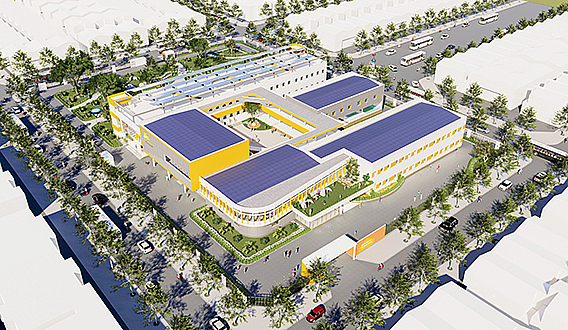The role of BIM in the construction strategy is often debated. BIM coordination services can help in the integration of the different aspects of a construction project through effective communication. It can validate the constructability of the design by helping formulate a suitable visual image. This, in turn, helps in the effective estimation of the costs and potential delays of the project. The seamless collaboration between the different teams is also an added advantage. Listed below are some of the most important advantages of integrating BIM into one’s construction strategy as listed out by top BIM consultants:

1. Effective Communication
Most often, the lack of effective communication between the parties involved causes errors that lead to increased costs and delays in a construction project. In the absence of BIM, interested parties work independently to achieve the exclusive objectives of the project. BIM unifies and integrates architects, engineers, operations and systems management, as well as project management into one cohesive, collaborative process. BIM coordination or collaboration leads to a unified and common definition of objectives in the planning phase. This, in turn, helps in increasing the chances of all concerned teams being aligned at each phase of construction.
2. Accurate Estimation Of Cost and Time
Duration and cost are two major factors that contribute to the success of a construction project. To Scan to BIM Scan to BIM services model helps to estimate the cost and time required during the design and planning phases. Cost and time estimates are based on a model that eliminates human error by providing the most accurate metrics. Obtaining a reliable estimate of these parameters at the construction planning stage can significantly improve the efficiency of the financial, planning and in the case of real estate projects, trade, helping to drive sales significantly.
3. Facilitates Easy and Quick Redesigning
The final constructed building is more often than not very different from what the initial plan suggested. Each design undergoes many changes before the start of construction. The visualization of the final design in the pre-construction phase allows the parties involved to analyze the constructability of the design. Without BIM, these changes are observed during the construction phase and the time is lost during the redesign of the design. The BIM model helps eliminate such situations. Having an accurate picture of the facility as it is, rather than imagining the design, can help stimulate future expansion and redevelopment strategies.
4. Aids In Cost Reduction
The accurate estimation of required raw material quantities is crucial to any construction project. Traditionally, consultants estimate quantity using 2D drawings and thumb rules, which often leads to overestimation or underestimation. Bim Consultants, however, are far more precise and accurate, which helps to reduce the costs related to waste or lack of raw materials.
Thus, BIM has more to offer than just faster and more efficient construction. Going forward, the widespread adoption of BIM technology will revolutionize the construction industry by raising the bar in all aspects.




